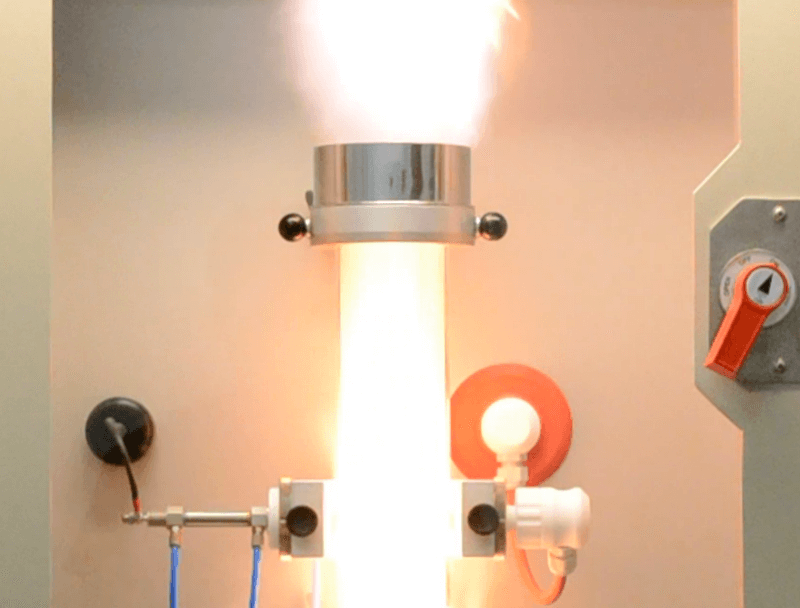Dust and Powder Flammability Testing
BS EN ISO IEC 80079-20-2
The test is conducted to assess whether a dust/powder will form a flammable atmosphere, supporting flame propagation, when dispersed as a dust cloud in air. It is a purely qualitative test and categorises a material into one of two groups:
Combustible (Group A) – Flammable or Explosible as a dust cloud
Non-Combustible (Group B) – Non-Flammable or Explosible as a dust cloud
Varying concentrations of dust are dispersed in either a 1 litre glass modified Hartman tube and subjected to a constant arc ignition source. Visually, observing for flame propagation away from the ignition source. Or the test is conducted, dispersing the dust into a 20L explosion vessel and exposed to a 2 kJ ignition source, monitoring for a pressure rise using sensitive, piezo resistive transducers.

Materials that are found to be Non-combustible (Group B) – Non-Flammable or Non-Explosible will not present a flammable atmosphere when dispersed as a dust cloud, therefore not subject to the conditions stipulated within DSEAR (Dangerous Substances and Explosive Atmospheres Regulations) or ATEX (Atmosphere Explosive) in regards to dust cloud explosion hazards.
Materials that are found to be Combustible (Group A) – Flammable or Explosible will present a flammable atmosphere when dispersed as a dust cloud, therefore if a sufficient ignition source is present then a hazardous situation could arise, and an explosion or fire occur, resulting in product loss and more importantly operator injury and in some cases fatality. Further testing will be required to establish a suitable basis of safety for each process or operation handling a Combustible (Group A) – Flammable dust. Related testing includes MIE, MIT, LIT, 20 Ltr (Pmax, Kst), MEC, LOC, see dedicated pages for futher information.

Minimum Ignition Energy (MIE)
Read More
Minimum Ignition Temperature (MIT)
Read More
Layer Ignition Temperature (LIT)
Read More
Minimum Explosive Concentration (MEC)
Read More
Burning Behaviour
Read More
Explosion Severity (Pmax, Kst)
Read More© 2024 Sigma-HSE (India) Pvt Ltd | Registered in India No. U93000DL2014PTC266010 | Designed By WebClixs